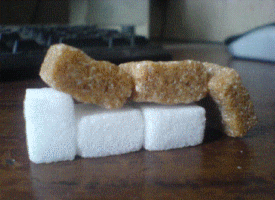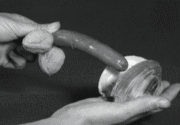
|
Lorna Mills and Sally McKay
Digital Media Tree this blog's archive OVVLvverk Lorna Mills: Artworks / Persona Volare / contact Sally McKay: GIFS / cv and contact |
View current page
...more recent posts
I hope everyone enjoyed a Fruitful Mormon Holiday yesterday.
Now in other business,
 posted something about not feeling it enough to write about art these days.
posted something about not feeling it enough to write about art these days.



(found)
Sunday - Sergio Méndez
Mas que Nada
Day Tripper
Ye-Me-Li & Wichita Lineman (and pure stair porn)
Tuesday, Feb 17, 2009 at Light Industry - NEW SPACE, 220 36th Street, 5th Floor, Brooklyn, NY

Screen grab from Survival! with Guy Maddin & Greg Klymkiw
"When SHAW cable purchased Winnipeg's local cable station VPW, a rumour was circulated that SHAW had destroyed the public access television archives and were systematically dismantling the public access services. Shortly thereafter, Daniel Barrow began researching, compiling and archiving a history of independently produced television in Winnipeg, Manitoba. In the late '70s and throughout the 80s, Winnipeg experienced a "golden age" of public access television. Anyone with a creative dream, concept or politic would be endowed with airtime and professional production services.
A precedent that went far beyond standard television formula was set in the late '70s when the infamous Winnipeg performance artist Glen Meadmore sat in front of a television camera and silently picked at his acne for 30 minutes each week in a program called The Goofers (later The Glen Meadmore Show). Winnipeg Babysitter traces this and other unique vignettes from a brief synapse in broadcasting history when Winnipeg cable companies were mandated to provide public access as a condition of their broadcasting license. "

(found)
Joester has been talking about Johan Huizinga's book Homo Ludens on a recent thread. I'm interested in how similar Huizinga's characteristics of play are to potential descriptions of art. There are differences, of course, but charming cross-overs.
voluntary: "...all play is a voluntary activity."sidenote: L.M. claims to use the following quote as an error message, "Play only becomes possible, thinkable and understandable when an influx of mind breaks down the absolute determinism of the cosmos."
not ordinary life: "...play is not 'ordinary' or 'real' life. It is rather a stepping out of 'real' life into a temporary sphere of activity with a disposition all its own."
limitedness in time: "Play begins at a certain moment and then it is 'over.'"
repeated: "It is transmitted, it becomes tradition. It can be repeated at any time, whether it be 'child's play' or a game of chess or at fixed intervals like a mystery."
limitedness in space: "All play moves and has its being within a playground marked off beforehand either materially or ideally, deliberately or as a matter of course."
order: "...it creates order, it is order. Into an imperfect world and into the confusion of life it brings a temporary, limited perfection. Play demands order absolute and supreme. The least deviation from it 'spoils the game', robs it of its character and makes it worthless."
aesthetics: "Play has a tendency to be beautiful."
tension: "...testing of the player's prowess"
fairness: "...despite his ardent desire to win he must still stick to the rules of the game."
rules: "All play has its rules."